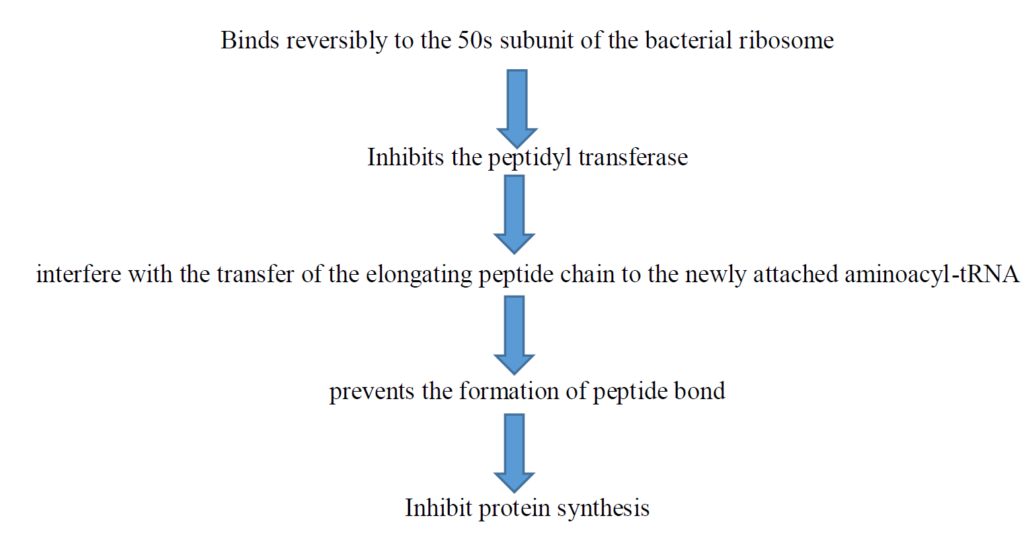Table of Contents
Chloramphenicol
- Chloramphenicol is a bacteriostatic broad-spectrum antibiotic, active against both aerobic and anaerobic gram +ve & gram –ve organisms.
- It is also active against rickettsiae but not chlamydiae.
- Isolated from the cultures of Streptomyces venezuelae in 1947.
- It is a unique compound that contains a nitrobenzene moiety, which is probably responsible for the antibacterial activity.
Molecular structure

Pharmacokinetics
- Administration: Oral, parenteral
- Absorption: Rapidly and completely absorbed
- Distribution: Widely distributed throughout the tissues and body fluids( 30-50% plasma protein-bound, half-life is approximately 2 hours, freely penetrates BBB )
- Metabolism: Primarily conjugated with glucuronic acid in the liver
- Excretion: Metabolite is excreted mainly in the urine
Mechanism of action


Therapeutic uses
- Bacterial as well as rickettsial infections.
- Has excellent activity against anaerobes.
- Either bactericidal or (more commonly) bacteriostatic, depending on the organism.
- Also used against Salmonella typhi, Brucella species.
- Infections caused by Haemophilus influenza resistance to other drugs.
- Used in meningitis in whom penicillin cannot be used.
Resistance
Bacteria produce an enzyme, chloramphenicol acetyltransferase

which can degrade the drug

bacteria become chloramphenicol resistance
Adverse effects
1)Bone marrow
- pancytopenia
- leukopenia,
- thrombocytopenia
- aplasia of the bone marrow
- aplastic anemia
2)Gastrointestinal
- Nausea, Vomiting
- Unpleasant taste
3)Toxicity in neonates
- Gray baby syndrome
Gray baby syndrome
- Most of the chloramphenicol is conjugated (in the liver) with glucuronic acid and the process is called glucuronidation.
- In the case of neonates & very young babies, the glucuronidation enzyme is deficient resulting in the accumulation of chloramphenicol in the body.
- This leads to various symptoms including anemia, CVS collapse, cyanosis.